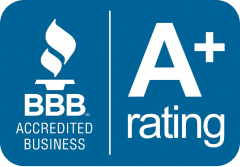
Most people’s budgets include health insurance, and it’s not a cost that goes away once they hit 65 and are eligible for Medicare coverage. Knowing how much Medicare will cost you is crucial to ensuring that you have the money to handle those costs. However, because there are multiple different aspects of Medicare that can be purchased separately, the total cost of Medicare can vary greatly.
How Much Does Medicare Cost?

The cost of Medicare is determined by a number of factors, including the type of coverage you select, when you enrol, your annual income, the amount of medical services you require, and whether you have additional health insurance. Premiums (monthly payments), deductibles (the amount you pay before insurance kicks in), and coinsurance or copayments are all part of your expenditures (the amount you owe a medical provider or prescription drug seller after Medicare has paid its portion).
Find Medicare Plans in 3 Easy Steps
We can help find the right Medicare plans for you today
How Much Does Medicare Part A Cost?

In-patient hospital stays, hospice care, skilled nursing facility stays, and home health services are all covered under Medicare Part A, hospital insurance. You can anticipate to spend three out-of-pocket expenses (plus a fourth if you enrol late)Premium.
Deductible.
Coinsurance.
What Is the Part A Premium?

If you or your spouse worked for 40 quarters or more and paid Medicare taxes, you are eligible for “Premium-free Part A,” which means you won’t have to pay any monthly premiums. (The majority of people are exempt from paying Medicare Part A premiums.) In 2022, if you paid Medicare taxes for 30-39 quarters, you’ll pay $274 per month in premiums; if you paid Medicare taxes for less than 30 quarters, you’ll pay $499 per month in premiums.
What Is the Part A Deductible?

If you’re admitted to the hospital in 2022, the first 60 days of care will cost you $1,556. This is a $72 increase above the deductible in 2021. 2
What Is Part A Coinsurance?

The payments you make to see a doctor, stay in a skilled nursing facility, or have an extended hospital stay are referred to as “coinsurance” by Medicare, despite the fact that they are fixed sums rather than a percentage of expenditures. You must pay $389 per day in coinsurance with Medicare for the 61st through 90th days of inpatient hospital treatment. You’ll owe $778 every day for the next 60 days as part of your “lifetime reserve” benefit, up to 60 days in total.
You’ll also have to pay $194.50 each day in coinsurance for skilled nursing care on days 21 through 100.
What Is the Part A Late Payment Penalty?

If you are required to pay Medicare Part A premiums but do not enrol until you reach the age of 65, your monthly rates may increase by 10%. You may also be obliged to pay the increased premiums for twice as many years as you were not enrolled.
A Word of Advice

While figuring out the expenses of each aspect of Medicare can be overwhelming, doing so can help you come up with a decent estimate of your total Medicare payments.

How Much Does Medicare Part B Cost?
Original Medicare Phase B, sometimes known as medical insurance, is the second part of the programme. Doctor’s visits, outpatient services, preventive services, and some medical equipment are all covered. You can anticipate to spend three out-of-pocket expenses (plus a fourth if you enrol late):
Premium.
Deductible.
Coinsurance.
Late-enrollment penalty.

FAQ
What Are Part B Premiums?
The majority of people pay the basic Medicare Part B premium ($170.10), however high-income individuals may be required to pay an additional monthly price.

What Is IRMAA for Part B?
Anyone earning $91,000 or more per year as a single filer or $182,000 for joint filers pays the normal premium plus modifications. Here’s how much you might owe, as well as the monthly adjustment amount based on your income (IRMAA).
Part B Costs
FILE INDIVIDUAL TAX RETURNS WITH INCOME:FILE JOINT TAX RETURNS WITH INCOME:IRMAATOTAL MONTHLY PREMIUM Less than or equal to $91,000Less than or equal to $182,000$0.00$170.10Greater than $91,000 and less than or equal to $114,000Greater than $182,000 and less than or equal to $228,000$68.00$238.10Greater than $114,000 and less than or equal to $142,000Greater than $228,000 and less than or equal to $284,000$170.10$340.20Greater than $142,000 and less than or equal to $170,000Greater than $284,000 and less than or equal to $340,000$272.20$442.30Greater than $170,000 and less than $500,000Greater than $340,000 and less than $750,000$374.20$544.30Greater than or equal to $500,000Greater than or equal to $750,000$408.20$578.30
What Is the Part B Deductible?
This year’s Medicare Part B deductible is $233, up from $203 in 2021.
What Is Part B Coinsurance?
After you’ve paid your deductible, Medicare will normally cover 80% of covered costs, leaving you to fund the remaining 20%.
What Is the Part B Late Enrollment Penalty?
If you or your spouse do not have work-based insurance, your premiums will increase by 10% for each year you delay enrolling in Medicare Part B.
How Much Does Medicare Advantage (Part C) Cost?
Medicare Advantage plans are private, Medicare-approved health insurance plans that cover Parts A and B of the Medicare programme, as well as vision and dental coverage. The price of these plans varies depending on the included advantages. Each plan has its own set of benefits as well as premiums, deductibles, and copays. Participants must additionally pay their Part B premium, as well as any high-earners’ adjustment, if applicable.
Premiums are scheduled to decline to $19 per month in 2022.
How Much Does Medicare Part D Cost?
Prescription drug coverage is covered through Medicare Part D. Prescription drug coverage is available as part of your Medicare Advantage plan or as a stand-alone Part D plan. You can anticipate to spend four out-of-pocket expenses (plus one if you enroll late):
Premium.
Deductible.
Copay.
Coinsurance.
Late-enrollment penalty.
What Are Part D Premiums?
Your Medicare Part D premiums may vary, but in 2022, the “national base beneficiary premium” will be $33.37.
Find Medicare Plans in 3 Easy Steps
We can help find the right Medicare plans for you today
What Is IRMAA for Part D?
If you earned more than $88,000 ($176,000 for married couples filing jointly) on your tax return from two years ago, you must pay an additional tax. Here’s an estimate of how much you might owe:
Part D Costs: If your filing status and yearly income in 2020 was
FILE INDIVIDUAL TAX RETURNFILE JOINT TAX RETURNMARRIED, FILING SEPARATELYYOU PAY EACH MONTH$91,000 or less$182,000 or less$91,000 or lessyour plan premium above$91,000 up to $114,000above $182,000 up to $228,000not applicable$12.40 + your plan premium above $114,000 up to $142,000above $228,000 up to $284,000not applicable$32.10 + your plan premium above $142,000 up to $170,000above $284,000 up to $340,000not applicable$51.70 + your plan premium above $170,000 and less than $500,000above $340,000 and less than $750,000above $91,000 and less than $409,000$71.30 + your plan premium$500,000 or above$750,000 and above$409,000 and above$77.90 + your plan premium
Source: Medicare costs at a glance. medicare.gov. Accessed May 4, 2021.
What Is the Part D Deductible?
The amount of your deductible varies by plan (some plans with high premiums don’t have one at all), but it can’t exceed $480.
What Is the Part D Copayment?
The amount of your drug copay varies by plan and, in many cases, by the type of drug you require (generic or specialty). Tier 1 and 2 medications, which are less expensive, usually have a copay. For medications in Tier 3 or 4, which are often more expensive, they demand a copay.
What Is Part D Coinsurance?
Part D policyholders are divided into four payment segments.
Your annual deductible is as follows: It might cost up to $480 per year in 2022. You must pay for this fully out of your own money.
Initial coverage, in which you pay your portion of the copay or coinsurance until your total prescription spending (by you and the plan) reaches $4,430.
The coverage gap (also known as the donut hole), in which you are responsible for 25% of all expenses until you have paid $7,050 out of pocket.
Catastrophic coverage: You’ll owe a 5% coinsurance fee for the rest of the year, or $3.95 for generic prescriptions and $9.85 for brand drugs, whichever is more.
What Is the Part D Late Enrollment Penalty?
If you go more than 63 days without prescription medication coverage after your enrollment period, you’ll have to pay a penalty of 1% of your Part D premium for each month you went without coverage.
Next Steps
While figuring out the expenses of each aspect of Medicare can be overwhelming, doing so can help you come up with a decent estimate of your total Medicare payments. Once you’ve nailed that down, you can make sure those costs are in line with the rest of your budget.







